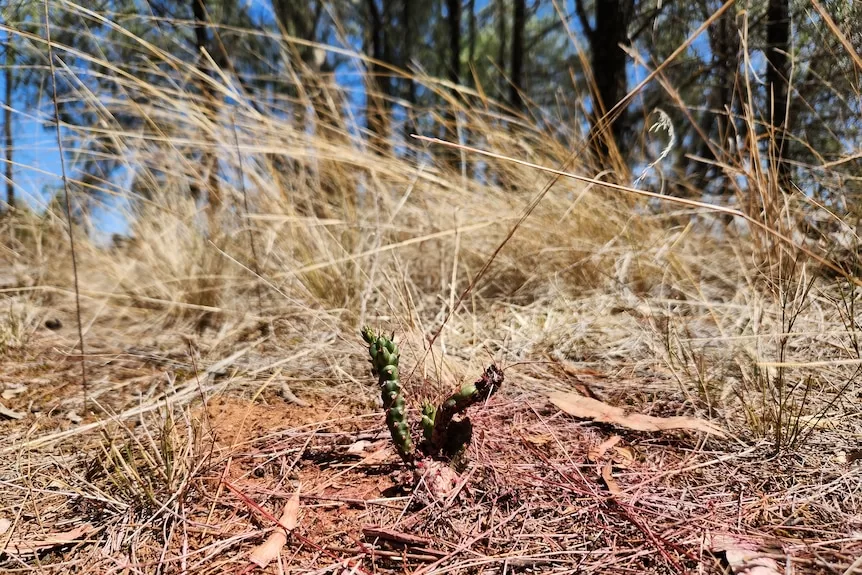After many decades, the western NSW community of Quanda, near Coonabarabran, has finally contained its large infestation of invasive cactus.
Key points:
- Hudson pear has been wreaking havoc in the region for decades
- An infestation site in Quanda in western NSW is finally contained
- A walk-through last week saw volunteers hand spray remnants of the weed
Hudson pear, originating from Mexico, is believed to have been illegally dumped in the region in the 1960s.
Senior field officer for Central West Local Land Service Craig Bennett said the weed could penetrate the toughest of footwear, and even car tyres.
“It can injure smaller animals and marsupials. It can really take over and damage the environment through them, and they also can help spread it into other areas,” Mr Bennett said.
“Animals, especially natives like kangaroos, can get it … on their skin, in their bodies, and at times it can actually kill them.”
The cactus can grow up to 1.5 metres tall and 3 metres wide and its spines are encased in a detachable sheath, which may remain embedded in a wound even after the body of the spine is removed.
It is estimated that the weed covers between 60,000 to 100,000 hectares in north-western NSW, but the plants have also been found in the Central West, Hunter, and Greater Sydney regions.
In some parts of far west NSW, drones are being used there to try to eradicate the highly invasive species.
Local groups and individuals tried separately to contain the Quanda outbreak site until 2015, when the Hudson Pear Taskforce was formed as a united front.
“The site has been contained to 28 hectares,” said Jodie Lawler, regional weeds coordinator for Central West Local Land Services.
“In the last four years, we’ve moved ahead in leaps and bounds,” Ms Lawler said.
“And Crown Land has now put a track through the site so it’s more accessible, so we can get in there and spray it.”
First detected in Lightning Ridge in the 1960s and found in Quanda soon after, Hudson pear is believed to have spread from a local cactus nursery.
Spreading along roadsides and onto properties, it has recently been threatening to enter the Warrumbungle National Park.
Earlier this month, chemical hand-spraying was conducted at Quanda’s original detection site for the first time.
“It’s certainly one way that you can get a thorough look at the land and see if there’s any plants that have escaped the naked eye,” Ms Lawler said.
“Especially if you’re just one person doing an inspection, you can become Hudson pear blind.”
Taskforce to contain species
Senior biosecurity officer for Castlereagh Macquarie County Council, Andy Fletcher Dawson, said while containment was a significant step, the work of the Hudson Pear Taskforce was not complete.
“We want to keep it contained and hopefully down the track, see close to eradication,” Mr Fletcher Dawson said.
The team had been coming back every three months and had noticed a significant reduction in Hudson pear plants.
“The problem we are finding now is just these small ones that keep coming back,” Ms Fletcher Dawson said.
“It just means we have to keep on it.”
Get our local newsletter, delivered free each Friday
